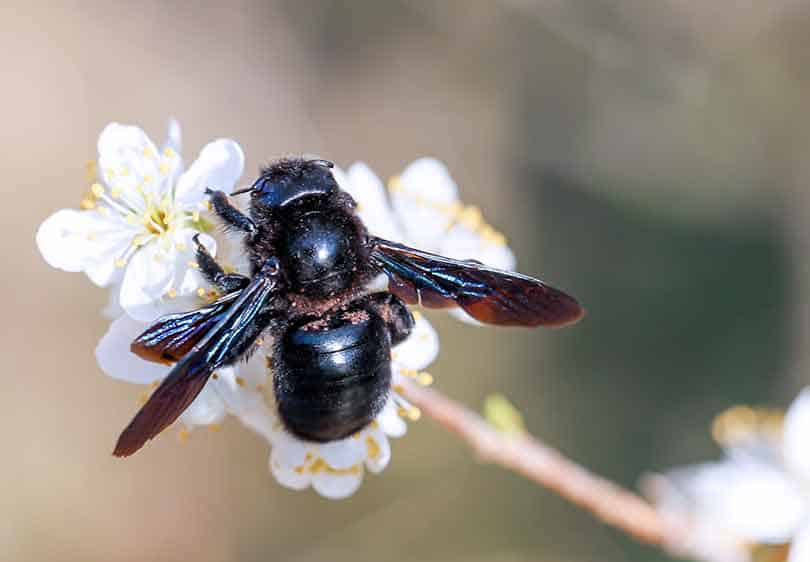Premier Vole Control Utah County Specialists
Wiki Article
Effective Pest Control Solutions for Vole Infestations

In the realm of parasite control, vole infestations offer a special obstacle that requires a calculated strategy. By delving right into the intricacies of vole behavior and exploring an array of control approaches, a comprehensive bug management strategy customized to these elusive creatures can be crafted. From all-natural repellents to innovative capturing strategies, the arsenal against vole problems is multi-faceted.
Recognizing Vole Actions
Voles, little rats generally found in areas and yards, exhibit unique actions patterns that are critical to comprehend when executing pest control steps - utah vole control. These animals are prolific diggers, creating a substantial network of tunnels underground where they nest, shop food, and seek shelter from predators and stormy weather condition. Voles are herbivores and primarily eat grasses, light bulbs, seeds, and roots, making fields and gardens perfect habitats for themOne trick actions of voles is their quick price of recreation. Women can bring to life several trashes each year, with litter dimensions varying from three to six dogs. This high reproductive ability enables vole populaces to quickly increase, bring about infestations if left unattended.
Recognizing vole behavior additionally includes recognizing their patterns of movement and foraging. Voles develop surface runways in grassy areas as they take a trip between their burrows and food resources. By observing these paths and the locations of burrow entryways, insect control professionals can determine high-traffic areas and tactically place traps or deterrents to effectively handle vole populaces.
Natural Repellents and Deterrents
With an understanding of vole behavior as a foundation, checking out all-natural repellents and deterrents comes to be essential in successfully handling vole problems in areas and yards. In addition, incorporating predator pee, such as that of foxes or coyotes, around the yard border can produce a natural obstacle that signifies danger to voles, motivating them to stay away.Furthermore, using castor oil-based repellents can interfere with vole tunnels as they discover the scent and taste unpleasant, prompting them to move. Mulching with materials like gravel, lava rocks, or coarse sand can likewise discourage voles as they dislike excavating via these harsh substances. Applying a mix of these natural repellents and deterrents can help properly take care of vole populations in a safe and sustainable manner, securing plants and yards from vole damage.
Capturing Methods for Voles

Snap catches are made to kill voles immediately upon activation. These catches ought to be placed in locations where voles are understood to take a trip, such as near burrow entries or along their runways. It is necessary to check snap traps routinely and get rid of any kind of recorded vole control utah county voles promptly to ensure the performance of the trapping procedure.
Live catches are a more gentle choice for those that want to capture voles without harming them. When a vole is caught in a real-time catch, it can be securely delivered to a different area and launched unscathed. Live traps must be checked frequently to avoid anxiety or damage to the caught voles.
When setting catches for voles, it is vital to consider their behavior and behaviors to boost the possibility of success (vole control service). By utilizing the suitable trapping techniques, vole populations can be effectively managed, lowering the damages they cause to agricultural and yard areas
Applying Physical Barriers
To better fortify the defense against vole invasions, the calculated execution of physical obstacles emerges as an aggressive measure to safeguard farming and garden areas. Physical barriers such as cord mesh, equipment cloth, or fencings can be set up below ground to avoid voles from delving into gardens or areas.In addition, the usage of tree guards or trunk wraps constructed from metal or plastic can secure tree trunks from vole damage during cold weather when various other food sources are scarce. These guards should expand above the expected snow line to avoid voles from gnawing on the bark. Routine evaluation and maintenance of these barriers are vital to guarantee their continued performance in deterring vole invasions and shielding important crops and plants.
Integrated Bug Monitoring Techniques
Integrating various parasite control methods, including organic controls, environment manipulation, and surveillance, develops the basis of efficient Integrated Parasite Monitoring techniques for dealing with vole infestations. Organic controls entail introducing all-natural killers of voles, such as serpents or owls, to the affected area to assist lower vole populations.Conclusion
In conclusion, reliable bug control solutions for vole invasions entail comprehending vole behavior, using natural repellents and deterrents, implementing trapping techniques, and setting up physical barriers. Integrated parasite management methods can also be used to attend to vole infestations adequately. By integrating these methods, home proprietors can efficiently mitigate and handle vole populaces without the requirement for excessive pesticide use.With an understanding of vole behavior as a structure, discovering natural repellents and deterrents becomes vital in efficiently managing vole invasions in fields and yards. Carrying out a combination of these natural repellents and deterrents can help efficiently take care of vole populaces in a safe and lasting way, securing plants and gardens from vole damage.
Incorporating various bug control approaches, consisting of organic controls, habitat control, and monitoring, creates the basis of efficient Integrated Pest Monitoring approaches for addressing vole infestations. Organic controls include introducing all-natural predators of voles, such as serpents or owls, to the affected area to assist lower vole populations (vole control utah county).In final thought, effective parasite control remedies for vole problems include understanding vole habits, utilizing all-natural repellents and deterrents, applying trapping techniques, and setting up physical barriers
Report this wiki page